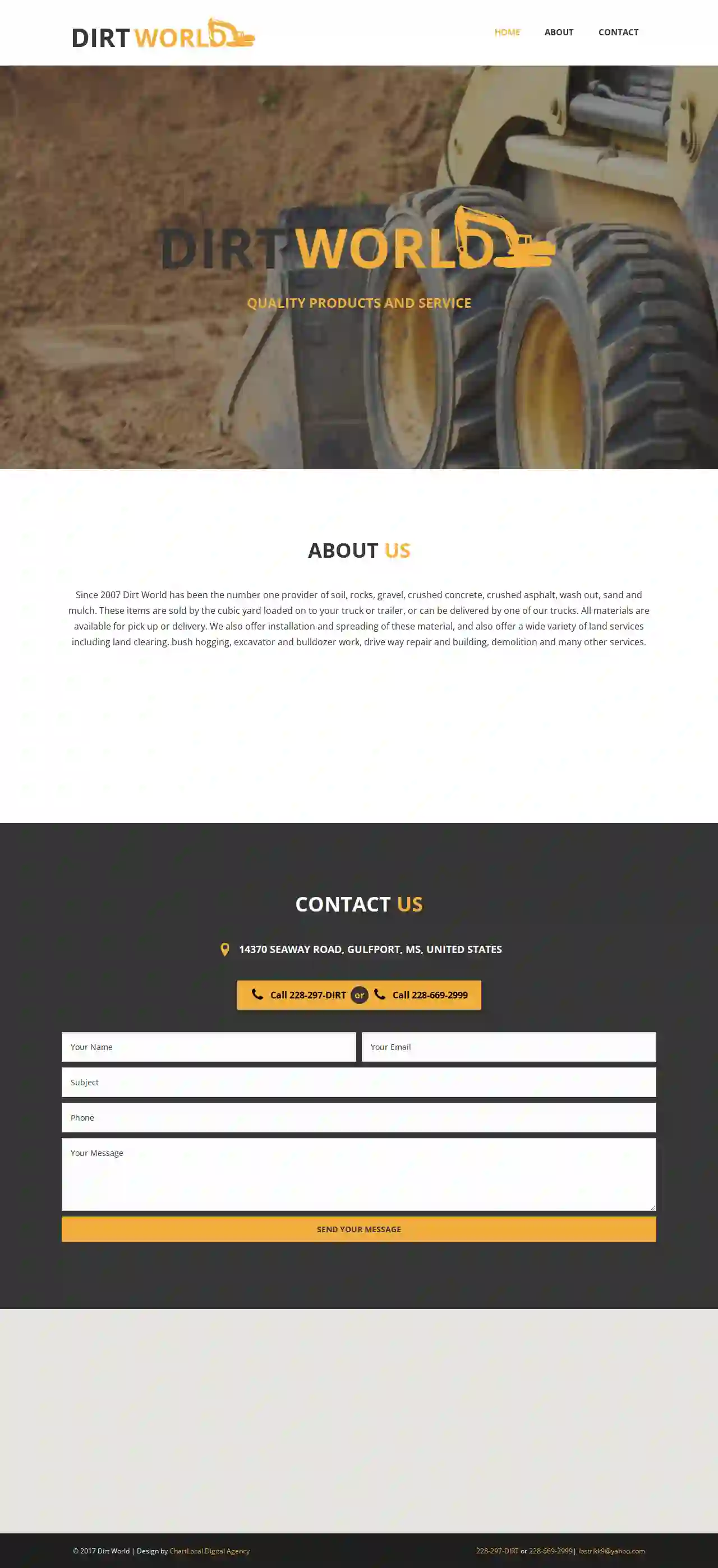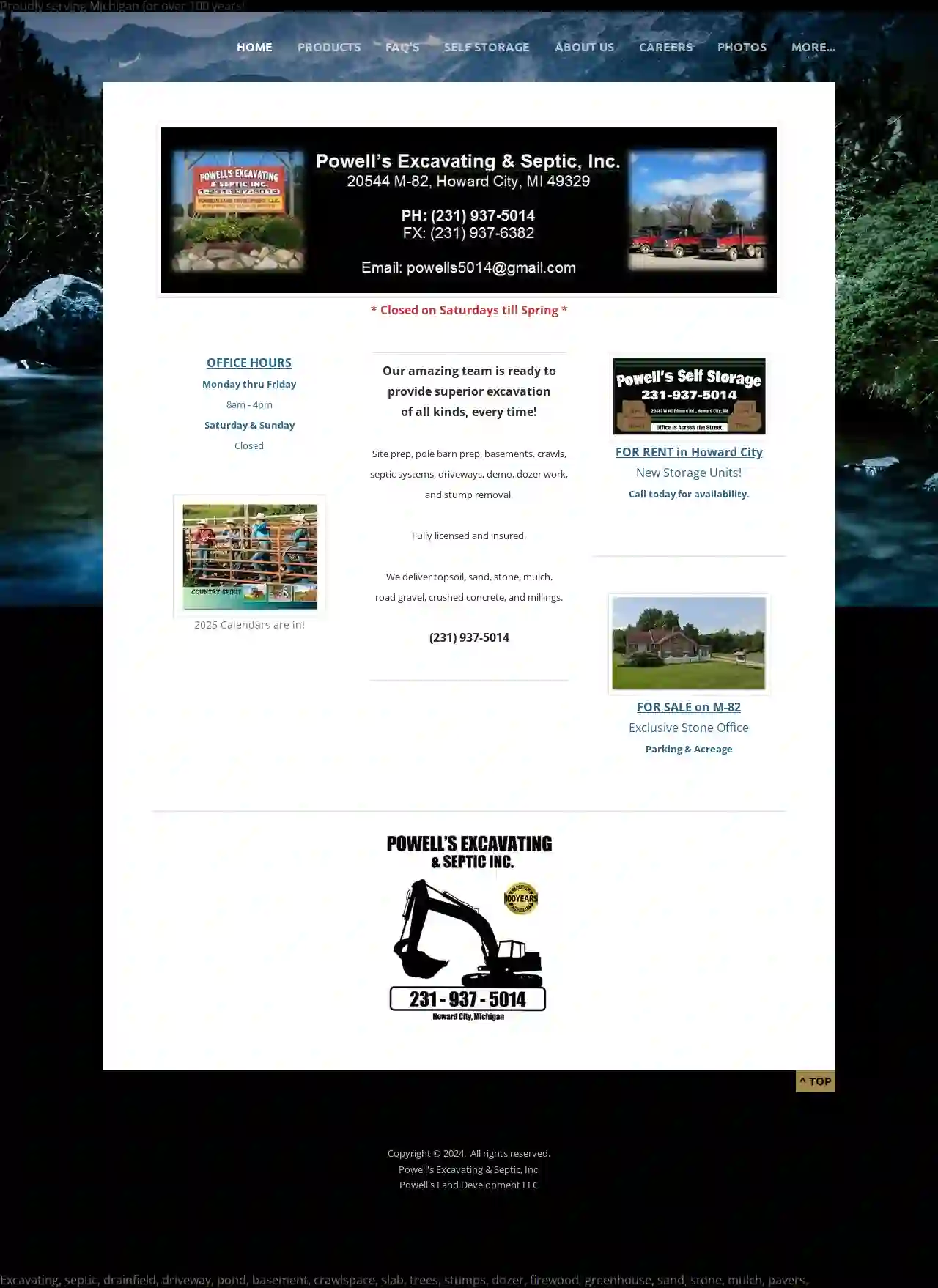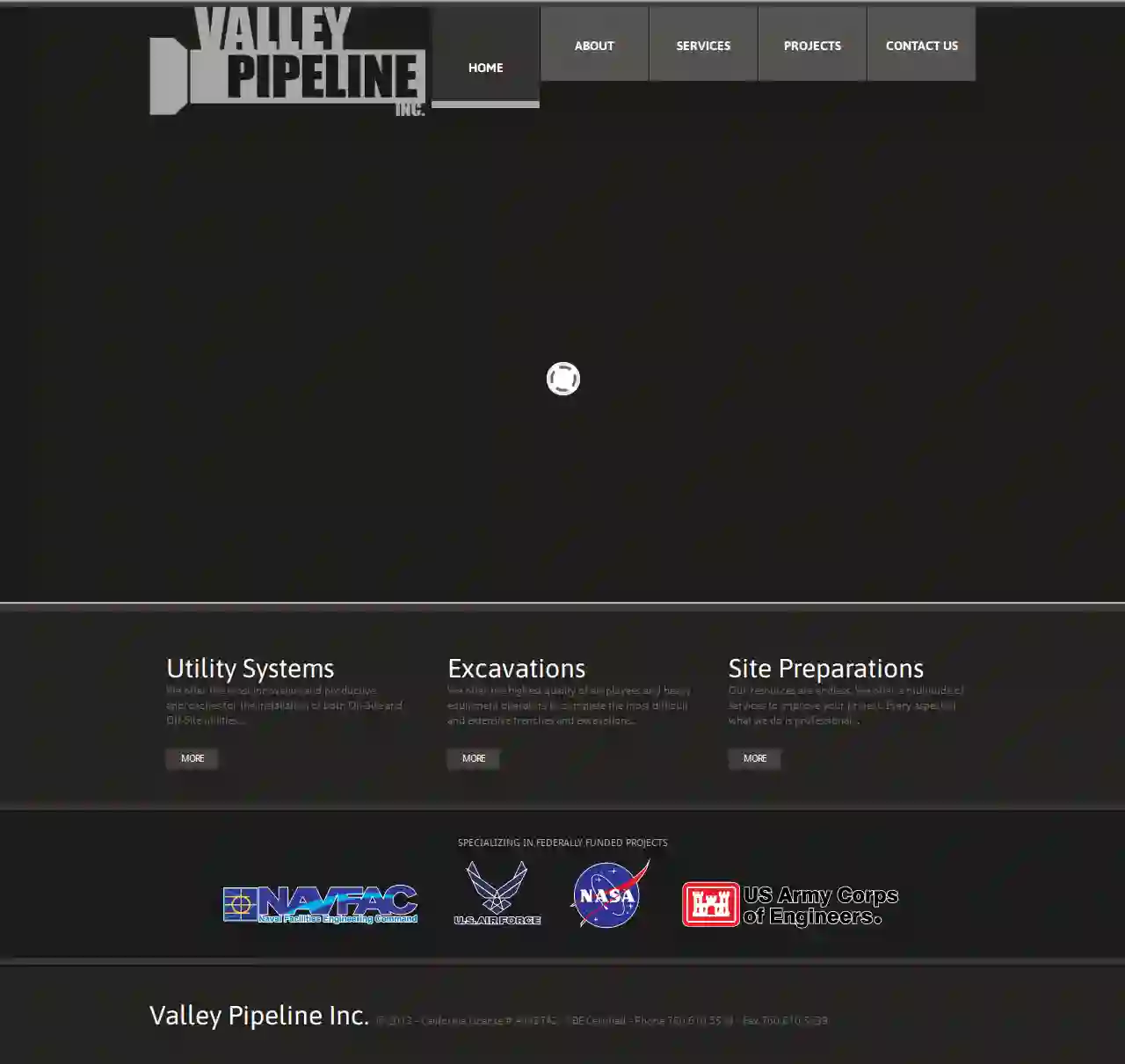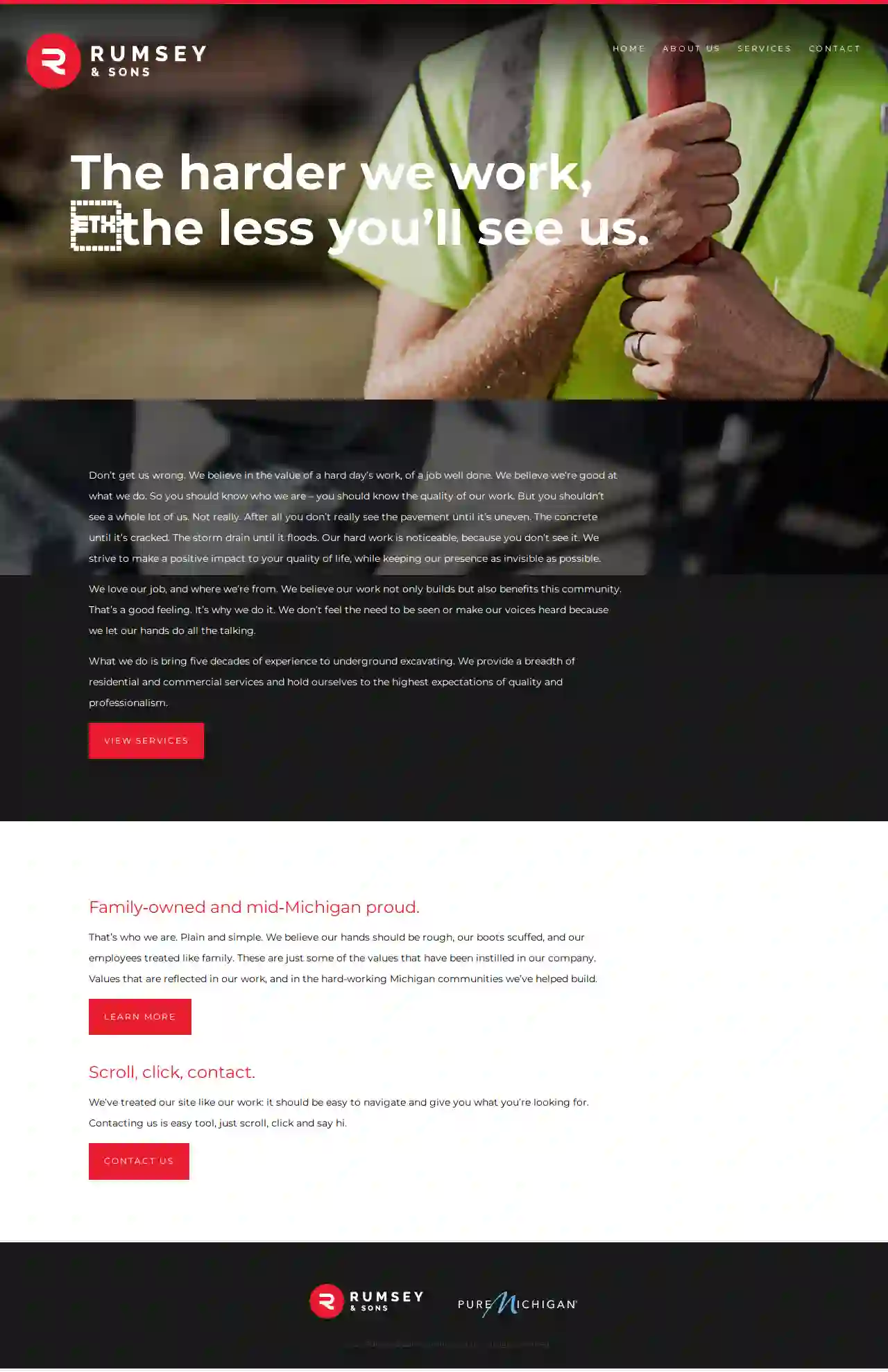Demolition Contractors Southgate
Find the best Demolition Services in Southgate
Get multiple Demolition Contractor quotes for your project today! Compare profiles, reviews, accreditations, portfolio, etc... and choose the best offer.

Dirt World
4.232 reviews14370 Seaway Road, Gulfport, USAbout Us Since 2007 Dirt World has been the number one provider of soil, rocks, gravel, crushed concrete, crushed asphalt, wash out, sand and mulch. These items are sold by the cubic yard loaded on to your truck or trailer, or can be delivered by one of our trucks. All materials are available for pick up or delivery. We also offer installation and spreading of these material, and also offer a wide variety of land services including land clearing, bush hogging, excavator and bulldozer work, drive way repair and building, demolition and many other services.
- Services
- Why Us?
- Gallery
Get Quote
Aazul Home Constructions, LLC.
51 reviews1525 John F. Kennedy Blvd, Jersey City, 07305, USAAZUL HOME CONSTRUCTIONS is leading quality projects. AAZUL HOME CONSTRUCTIONS is committed to providing our clients with quality home renovations, repairs and remodeling. As licensed and insured construction specialists we can manage all your construction needs ensuring that your project is completed on time and on budget; in compliance with all state and local building codes and requirements. We pride ourselves on creating innovative construction solutions. Our goal is to use our knowledge and experience to add value to any project we take on. In short, AAZUL HOME CONSTRUCTIONS means excellence. It's more than construction. AAZUL HOME CONSTRUCTIONS is focused on customer experience, exceeding expectations, meeting objectives and providing value in our projects to all of our clients. Our craftmanship, professionalism and quality of work speak volumes to our core mission of customer satisfaction.
- Services
- Why Us?
- Gallery
Get Quote
Pater Bobcat Services Inc
4.317 reviews3613 24th Ave SW, Grandville, 49418, USGrand Rapids Excavation Services Trust the fully licensed and insured experts at Pater Bobcat Services to help your project get off to a great start with our proven excavation services. From complex installations and additions to minor touch ups, we offer all the excavation services you’ll need for your next project. Since 1999, commercial and residential contractors throughout West Michigan have trusted Pater Bobcat Services’ wide range of expertise. From concrete and asphalt pavement removal and prep to catch basin repairs and replacement, to pool demolition or materials delivery, Pater Bobcat Services will complete your project on time and on budget. Our team believes communication remains key when it comes to providing quality results. Trust our experienced professionals to stay in touch with you every step of the way as we implement your needs and pay attention to those little details that make a good project great. From your initial vision to a spotless site post-project, our team will dedicate their time to helping you achieve your project goals while caring for your property as if it was their own. In addition to a hardworking team, we believe it’s important to have quality materials for a project to be successful. From crushed concrete, screened and unscreened topsoil, stone, sand, bark and mulch, we offer a wide range of materials that can help you with just about any job, big or small. For more information about excavation services from the experts at Pater Bobcat Services, please contact us here or call us directly at 616.896.9778.
- Services
- Why Us?
- Testimonials
- Gallery
Get Quote
Hugerich Construction, Inc.
52 reviews66 Henry St., Secaucus, 07094, USEstablished in 1955 by the Hugerich family, Hugerich Construction Inc. is a site development and excavation contractor. We operate heavy equipment to cut, fill and grade site, construct berms, install drainage systems and athletic fields, remove snow and more. We also use the latest CAD software to create 3-D surfaces to calculate takeoff of the job site. Hugerich Construction Inc. provides high quality services and is one of the most experienced contractors in the Secaucus area.
- Services
- Why Us?
- Gallery
Get Quote
Powell's Excavating & Septic, Inc
4.667 reviews20544 M-82, Howard City, 49329, USPowell's Excavating & Septic, Inc.: A Legacy of Service in West Michigan For over 50 years, the Powell family has been a trusted name in West Michigan, providing high-quality excavation and septic services. It all began in 1968 with Ken Powell and a single backhoe, laying the foundation for a business built on hard work, integrity, and a commitment to customer satisfaction. Ken's dedication to his craft and his family's values instilled a strong work ethic in his sons. As the business grew, his sons, Dave, Ken, and John, each played a vital role in its success. John, with his natural talent for management, took the reins in 1986, ensuring the continuation of the Powell legacy. Today, Powell's Excavating & Septic, Inc. remains a family-owned and operated business, upholding the same high standards and Christian values that have earned them a reputation for excellence. We are proud to serve our community, providing reliable and professional services for all your excavation and septic needs. Whether you're planning a new construction project, need a septic system installed, or require any other excavation services, our team is here to help. We are committed to delivering exceptional results, exceeding your expectations, and building lasting relationships with our clients.
- Services
- Why Us?
- Gallery
Get Quote
VALLEY PIPELINE INC.
3.76 reviews73161 Fred Waring Dr Suite 200, Palm Desert, 92260, USValley Pipeline Inc. is a leading underground utility contractor specializing in both wet and dry utilities. We are committed to providing our clients with the highest quality services and exceeding their expectations for safety, quality, functionality, and timely completion. Our team of experienced professionals is dedicated to delivering innovative and productive solutions for all your utility needs. We have a proven track record of success in a wide range of projects, including: Sewer and Water Tie-Ins Underground Storm Water Retention Fire Protection Systems Certified Welding Cast In Place Structures SoCal Gas Certified Contractor Above and Below Ground Hydronics systems Utility Systems Excavations Site Preparations We are proud to be a trusted partner for both public and private sector clients, specializing in federally funded projects. Our commitment to safety is paramount, and we are fully accredited and insured. We are also dedicated to environmental responsibility and adhere to all applicable regulations. At Valley Pipeline Inc., we believe in building strong relationships with our clients and employees. We treat everyone with respect, take responsibility for our actions, and value the relationships we build. We are committed to providing a safe and rewarding work environment for our employees, and we are always looking for talented individuals to join our team.
- Services
- Why Us?
- Our Team
- Gallery
Get Quote
Rumsey & Sons
4.37 reviews6757 Lansing Road, Charlotte, 48813, USRumsey & Sons: A Legacy of Quality and Dedication For over five decades, Rumsey & Sons has been a trusted name in mid-Michigan, providing exceptional excavating, concrete, and earthwork services. Our family-owned business is built on a foundation of hard work, integrity, and a commitment to exceeding expectations. We take pride in our craftsmanship and strive to deliver projects that meet the highest standards of quality and professionalism. Our team is comprised of experienced professionals who are dedicated to providing our clients with the best possible service. We understand the importance of clear communication, timely completion, and a commitment to safety. We are committed to building strong relationships with our clients and ensuring their complete satisfaction. At Rumsey & Sons, we believe in giving back to the community that has supported us for so many years. We are proud to be a part of the growth and development of mid-Michigan, and we are committed to leaving a positive impact on the region. We invite you to learn more about our services and our team. Contact us today to discuss your project needs.
- Services
- Why Us?
- Our Team
- Gallery
Get Quote
Delta Excavation And Demolition
51 reviews10000 County Rd 12, 10000 County Rd 12, Kitchener, N0L 1M0, USDelta Excavation & Demolition: Your Trusted Partner for All Your Excavation and Demolition Needs Delta Excavation & Demolition is a reputable and experienced company specializing in a wide range of excavation and demolition services. We are committed to providing our clients with high-quality workmanship, exceptional customer service, and competitive pricing. Our team of skilled professionals is dedicated to delivering projects on time and within budget, while adhering to the highest safety standards. We understand that excavation and demolition projects can be complex and require careful planning and execution. That's why we take a collaborative approach, working closely with our clients to ensure their needs are met and their expectations are exceeded. From site preparation to final cleanup, we handle every aspect of the project with precision and expertise. Whether you're building a new home, expanding your business, or demolishing an existing structure, Delta Excavation & Demolition is your trusted partner. We have the experience, equipment, and commitment to deliver exceptional results. Contact us today for a free consultation and let us help you bring your project to life.
- Services
- Why Us?
- Testimonials
Get Quote
C L Trucking & Excavating LLC
4.627 reviews256 E. Parameter Rd., Ionia, 48846, USAbout Us Since 1993, CL Trucking & Excavating has been serving the central Michigan area with spectacular excavation and trucking services. For 28 years, Chad Listerman, owner and founder, has built his business from the ground up. Chad began with one skid steer and a truck while working two full-time jobs and beginning a family with his wife Laura-- he has successfully put his business on the map. Serving out of Ionia County, he has turned his business into a community and employs over 70 local families. Our Guarantee We strive to create the best experience for our customers. Whether it's the quality of the project, safety for others and ourselves, working within budgets, meeting deadlines, or even the helpful, honest relationship created between the customer and the company. Our word and our handshake mean something.
- Services
- Why Us?
- Gallery
Get Quote
Warren Paving Inc
4.449 reviewsWarren, USWhy Warren Paving? Warren Paving delivers outstanding service performed by qualified teams who are experienced in virtually every type of paving, resurfacing or repair projects. Our relationship with you begins with understanding your needs and expectations, and we follow through on every promise we make. With Warren Paving Inc. being a virtually integrated company, this allows us to control every variable of the project from mining and shipping of limestone to the placement of asphalt pavement and all aspects in between. Contact one of our team members and find out why Warren Paving is the preferred choice!
- Services
- Why Us?
- Testimonials
- Gallery
Get Quote
Over 22,076+ Excavation Pros on our platform
Our excavation contractors operate in Southgate & surroundings!
ExcavationHQ has curated and vetted Top Excavation Businesses arround Southgate. Find a trustworthy contractor today.
Frequently Asked Questions About Demolition Contractors
- Experience: Look for companies with a proven track record and years of experience in the demolition industry.
- Licensing and Insurance: Ensure the contractor is properly licensed to operate in your area and carries adequate insurance to protect you from liability.
- Safety Record: Inquire about their safety protocols and accident history. A reputable contractor prioritizes safety.
- References and Reviews: Ask for references from past clients and check online reviews to gauge their reputation and customer satisfaction.
- Professionalism: Choose a company that communicates clearly, provides detailed estimates, and has a courteous and responsive team.
- Enclosure: Sealing off the asbestos-containing material to prevent fiber release.
- Encapsulation: Coating the asbestos-containing material with a sealant to bind the fibers.
- Removal: Carefully removing the asbestos-containing material and disposing of it safely.
- Permits and Regulations: Obtain all necessary demolition permits and comply with local building codes and environmental regulations.
- Contracts: Have a clear and comprehensive contract with the demolition contractor outlining the scope of work, payment terms, and liabilities.
- Environmental Laws: Comply with environmental laws regarding hazardous material removal, waste disposal, and pollution control.
- Neighboring Property Rights: Respect neighboring property rights and take measures to prevent damage or disruption to adjacent properties.
- Worker Safety: Adhere to worker safety regulations and provide a safe working environment for demolition crews.
- Size and Complexity of the Structure: Larger and more complex structures, such as multi-story buildings, require more time, labor, and specialized equipment, increasing costs.
- Type of Demolition: Different demolition methods, such as implosion, wrecking ball, or high-reach demolition, have varying costs.
- Material Disposal: Disposal fees for demolition debris can contribute significantly to the overall cost, depending on the type and quantity of materials.
- Location and Accessibility: Demolition in densely populated areas or with limited access may require more planning and specialized equipment, affecting costs.
- Hazardous Materials: The presence of asbestos, lead paint, or other hazardous materials requires specialized removal and disposal procedures, adding to the expenses.
How do I find a reputable demolition contractor?
What are the different methods of asbestos abatement?
What are the legal considerations for demolition projects?
How much does demolition cost in the USA?
How do I find a reputable demolition contractor?
- Experience: Look for companies with a proven track record and years of experience in the demolition industry.
- Licensing and Insurance: Ensure the contractor is properly licensed to operate in your area and carries adequate insurance to protect you from liability.
- Safety Record: Inquire about their safety protocols and accident history. A reputable contractor prioritizes safety.
- References and Reviews: Ask for references from past clients and check online reviews to gauge their reputation and customer satisfaction.
- Professionalism: Choose a company that communicates clearly, provides detailed estimates, and has a courteous and responsive team.
What are the different methods of asbestos abatement?
- Enclosure: Sealing off the asbestos-containing material to prevent fiber release.
- Encapsulation: Coating the asbestos-containing material with a sealant to bind the fibers.
- Removal: Carefully removing the asbestos-containing material and disposing of it safely.
What are the legal considerations for demolition projects?
- Permits and Regulations: Obtain all necessary demolition permits and comply with local building codes and environmental regulations.
- Contracts: Have a clear and comprehensive contract with the demolition contractor outlining the scope of work, payment terms, and liabilities.
- Environmental Laws: Comply with environmental laws regarding hazardous material removal, waste disposal, and pollution control.
- Neighboring Property Rights: Respect neighboring property rights and take measures to prevent damage or disruption to adjacent properties.
- Worker Safety: Adhere to worker safety regulations and provide a safe working environment for demolition crews.
How much does demolition cost in the USA?
- Size and Complexity of the Structure: Larger and more complex structures, such as multi-story buildings, require more time, labor, and specialized equipment, increasing costs.
- Type of Demolition: Different demolition methods, such as implosion, wrecking ball, or high-reach demolition, have varying costs.
- Material Disposal: Disposal fees for demolition debris can contribute significantly to the overall cost, depending on the type and quantity of materials.
- Location and Accessibility: Demolition in densely populated areas or with limited access may require more planning and specialized equipment, affecting costs.
- Hazardous Materials: The presence of asbestos, lead paint, or other hazardous materials requires specialized removal and disposal procedures, adding to the expenses.